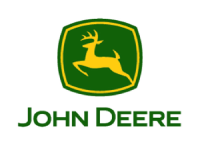Ballasting Your Tractor: Why It Matters
Ballasting Your Tractor: Why It Matters
By: Jared Torbert
Lawn, Garden and Compact Tractors are versatile machines that can be used for a variety of
different tasks on smaller properties all the way to farms. They're useful for landscaping,
digging, snow removal and much more. However, to get the most out of your tractor, you need
to make sure it has the proper ballast to perform the task at hand.
So, what is Ballast? Ballast, simply put, is weight that is added to equipment to improve its
stability, safety and performance. In the case of tractors, ballast is typically added to the
front/rear and or the wheels of the machine. This is important because tractors especially
Compact Tractors are often used with attachments, such as tillers, and loaders, which will
change the weight distribution of the machine.
Without ballast, your tractor may not be able to perform certain tasks effectively or safely. For
example, if using a front loader to move heavy objects, the weight of the load the loader is
lifting can cause the rear of the tractor to lift off the ground. This can be dangerous for
operators as traction/control is lost. Also, this creates excessive stress on the front axle can
damage components of the tractor causing downtime and a hefty repair bill.
Speaking of traction, this is another area ballast will help performance. If you're working on a
slope or in wet/snowy conditions, adding weight to the rear/front of the tractor along with the
wheels themselves can help lower your center of gravity, improve traction and prevent the
wheels from slipping.
When adding ballast, it's important to distribute the weight from front to rear. For example,
during loader applications adding weight to the rear of the tractor is recommended. If using
implements like a rear snowblower or tiller having ballast weight on the front is recommended.
When adding weight to the front of the tractor, using items like front weights or attach a loader
with a bucket are good ideas. Adding weight to the rear of the tractor using items like rear
wheel weights along with/or attach a ballast box filled with heavy material such as sand or
gravel are a few options.
The amount of ballast you need depends on a few factors, including the size and weight of
your tractor, the type of attachments you're using, and the conditions you'll be working in. For
more detailed information on specific ballasting recommendations and weight for implements
referring to the operating manuals of each implement is ideal.
Ballast is a very important point of consideration when using a tractor and
attachments/implements. Adding weight to the front or rear of the machine can improve
stability, balance, and traction, making it easier and safer to perform the task at hand and
getting you on to the next job.


